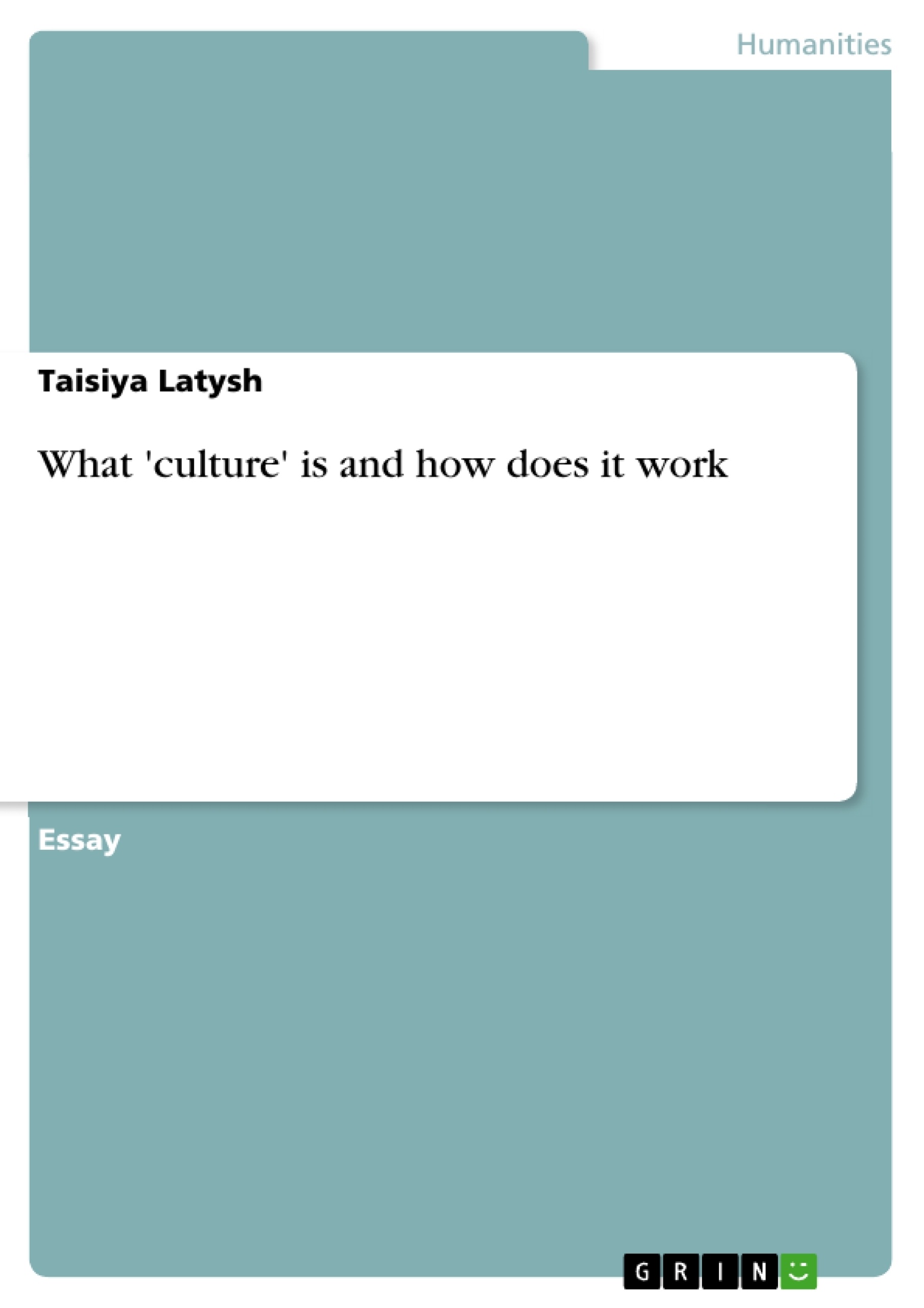The notion of culture is diverse. It cannot be defined in two or three phrases. Besides, it is difficult to find any other such word which would have such set of semantic shades. In a survey of definitions of culture carried out in 1952 by anthropologists A. L. Kroeber and C. Kluckhohn they identified 164 distinct meanings, including among others those based on the concept of traditions, habits, learning, ideas and symbols. One that I’ve found the most unusual is: “.culture is human energy organized in patterns of repetitive behaviour”. (A. L. Kroeber, C. Kluckhohn 2001 p.141)
So what is the reason of such a variety of interpretations?
Inhaltsverzeichnis (Table of Contents)
- What 'culture' is and how does it work
- The Culture and Consciousness
- How does culture work?
- Ethnocentrism
- My Experience with Culture
Zielsetzung und Themenschwerpunkte (Objectives and Key Themes)
The primary goal of this text is to explore the multifaceted concept of culture and provide an understanding of how it functions in human life. It aims to deconstruct the meaning of culture, its origins, and its impact on individual and societal interactions. It also aims to highlight the challenges and opportunities associated with cultural diversity.
- The various definitions and interpretations of culture
- The role of consciousness and perception in shaping cultural understanding
- The impact of language and communication on cultural development
- The challenges of cultural diversity and ethnocentrism
- The potential for bridging cultural differences and promoting understanding
Zusammenfassung der Kapitel (Chapter Summaries)
- The first chapter explores the diverse and multifaceted nature of the concept of 'culture'. It examines various definitions, including those emphasizing traditions, habits, learning, and symbols. The author also highlights the subjective and dynamic nature of culture, acknowledging the influence of individual perception and interpretation.
- The second chapter delves into the relationship between culture and consciousness. It argues that culture arises from an individual's understanding and perception of life, emphasizing the concept of "selective perception". This chapter suggests that our reality is shaped by our cultural lens, influenced by language and societal constructs.
- The third chapter focuses on how culture is created and perpetuated. It highlights the dynamic and interactive process of cultural transmission, where individuals learn and internalize cultural knowledge. The chapter emphasizes the role of social construction in shaping individual beliefs and behaviors.
- The fourth chapter addresses the challenges of cultural diversity and the potential for conflict. It examines the concept of 'ethnocentrism', the tendency to view one's own culture as superior. The chapter explores ways to mitigate this challenge through the "MAR" concept, encouraging understanding and bridge-building across cultural divides.
Schlüsselwörter (Keywords)
The key concepts and terms that dominate this text include culture, consciousness, perception, language, social construction, ethnocentrism, cultural diversity, selective perception, linguistic relativism, and intercultural understanding. These terms encapsulate the core themes of the text, highlighting the intricate relationship between human perception, cultural values, and societal interactions.
- Arbeit zitieren
- Taisiya Latysh (Autor:in), 2009, What 'culture' is and how does it work, München, GRIN Verlag, https://www.grin.com/document/124487




